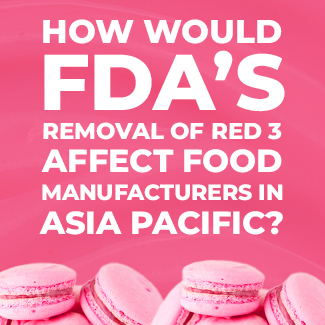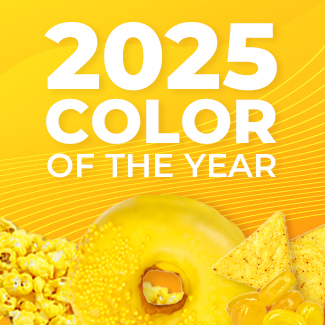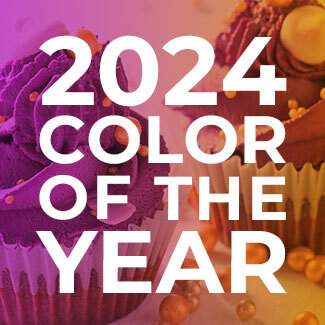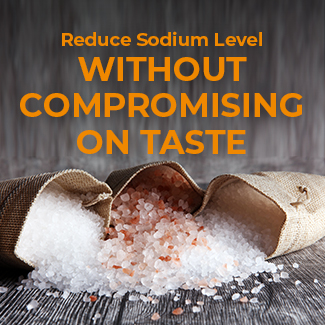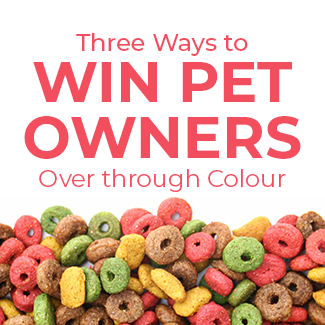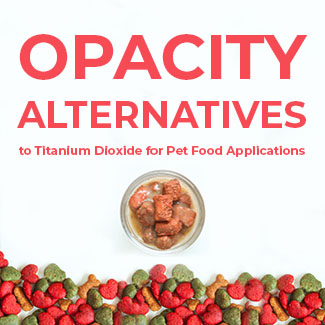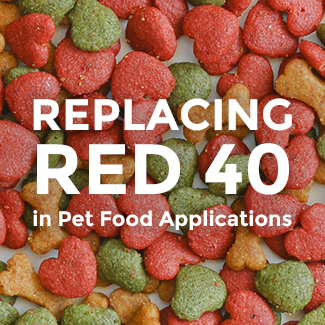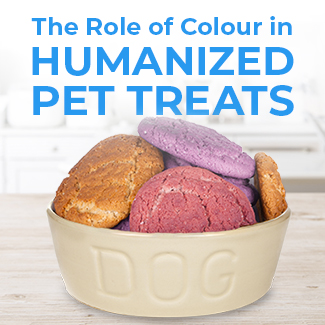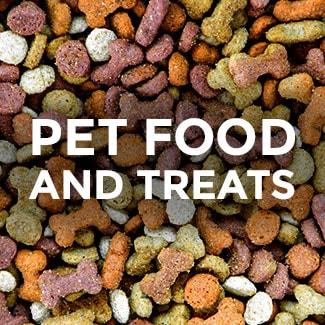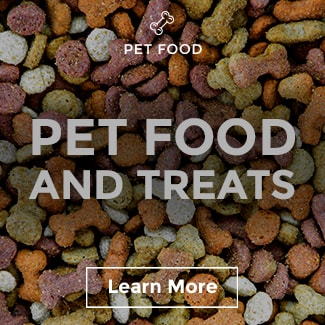Natural Pet Food Colors for the International Market
Pet suppliers shift to natural pet food ingredients to meet consumer demand
The rise of health-focused products to support overall wellbeing is pulling the pet food market along with it. As pet parents shift toward natural ingredients for their own food and beverage, the same behavior is carried forward to the pet food and treats market.

Global all-natural pet food launches have
increased 34% since 2016
Mintel 2023

Pet owners around the world increasingly expect naturalness and better-for-pets food and treats, just as they expect “healthier” options in their own diets.
For pet food, visual appearance is vital for ‘pawrent’ shoppers to evaluate wet food, kibble, or treats. Therefore brands need to convey value and nutrition with color.


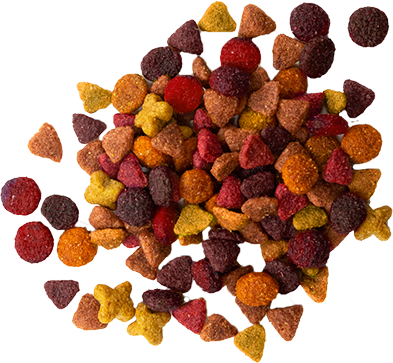
Color adds value for pet parents,
indicating nutrient impact and quality
Academic research has shown that color liking in dog kibble is the feature most highly correlated with owner and pet overall liking and therefore purchase intent (Di Donfrancesco, Brizio et al. 2014). Sensient’s own online consumer research extended these findings to determine that pet owners find multi-colored kibble to be the best representation of a highly nutritious recipe. Different shades indicate to caring pet parents the presence of proteins and other superfood ingredients in a healthy pet kibble or treat. Pet suppliers shipping to the US can meet consumer demands with cat- and dog-safe food coloring and AAFCO-approved pet food ingredients. Color isn’t limited to cats and dogs, of course— highly colored products across the pet store cater to other domesticated animals like rabbits, birds, iguanas, guinea pigs, fish, and more.
Color experts can help guide developers to select natural pet food color ingredients that fit the project’s criteria, condition’s, and cost-in-use targets.
Exploring our rainbow of possibilities:

Target Shade: Red
Meaty reds are perfect for pet food. Natural red sources from fruit and vegetable juices like anthocyanins and beet juice are excellent for brands seeking clean-label, recognizable color ingredients. Improved stability and concentration from optimized solutions like Sensient’s UberBeet™ portfolio, including SupraRed™ and Magna Ruby™ can make meaty reds even more achievable in harsh processing conditions like extrusion. Red carotenoids like paprika, beta carotene, and lycopene further extend the red and pink range possible with good overall stability. Carmine is considered AAFCO-natural and is widely used in the pet food industry for incredibly stable red hues under extremely harsh processing conditions. Red iron oxide also offers excellent stability but may not comply with ingredient “no-no” lists.
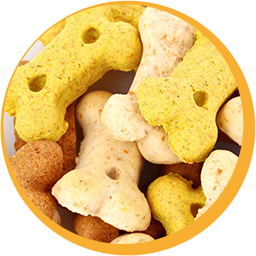
Target Shade: Yellow
Bold yellows stand out from darker hues in a bowl of kibble and may convey elements of nutrition to pet parents seeking “healthy” options. Turmeric is known for its neon yellow hue and excellent heat stability, but for products exposed to light through transparent packaging, a more light-stable option like annatto at a low usage rate can be used. Beta carotene also offers bright yellows in pet kibble and treats with good overall stability.
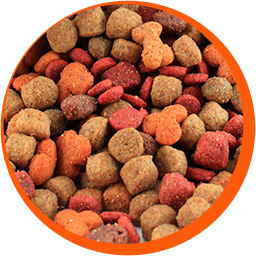
Target Shade: Orange
Annatto and beta carotene offer developers multiple shades of orange from pastels to bold hues with good overall stability. Paprika and its deodorized form Pure-S™ Paprika enable developers to reach the brightest single-solution orange shades. Blends of natural yellows and natural reds extend the rainbow even further.
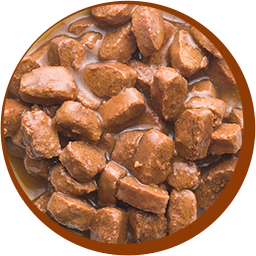
Target Shade: Brown
Shades of brown are the most popular request for pet products from retort gravies to extruded kibble. From light “cooked chicken” shades to darker “grilled steak” hues, caramel color is a flexible and stable solution. For brands seeking to formulate without caramel, Sienna™ fruit juice offers clean label natural browns. Blends with cost-effective anthocyanins or multiple color components like red, blue, and yellow deepen the portfolio even further so that any brown target is within reach.
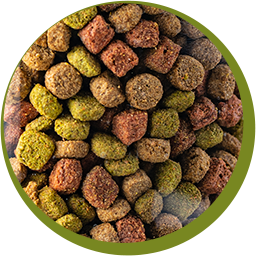
Target Shade: Green
Green hues can really help a treat or kibble piece catch eyes and communicate “better-for-pets” product positioning visually. Blends of Sensient’s natural blue vegetable juice and natural yellows offer even more green hues for earthy tones in kibble and treats.
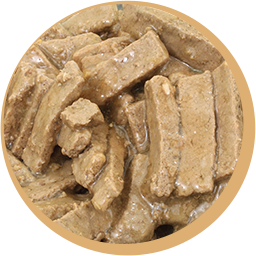
Target Shade: White
Bright whites are often used to mimic the appearance of bone or fat in pet food or treats. A whitening agent like Avalanche™ or TiO2 may also help “even out” a base color or ensure color consistency between batches. Titanium dioxide is the most well-known white colorant on the market and works at a low usage rate across applications but faces scrutiny and even bans from certain North American retailers, brands, and global regulatory bodies. Sensient’s Avalanche™ portfolio includes solutions like Avalanche™ MB and Avalanche™ Helio that offer similar performance in kibble, retort, and treat applications.
What do developers need to consider when working to find high-performing, safe ingredients for dog treats, canned cat food, and pet kibble?
Here are several different factors to keep in mind:
Heat
Most pet food and treats experience some level of heat and pressure processing, from baking to extrusion to retort to injection molding. The level of heat, the duration of exposure, and the temperature applied can all impact color success in a product.
Base Shade
All base formulas are different and present different “starting shades” to developers trying to achieve target visuals. Formulating with base shades in mind is a skill Sensient color experts use to offer our customers the best color solutions possible.
Acidity
While some natural colors thrive in acidic conditions, others prefer more neutral environments. Knowing the pH of a formula enables a color expert to understand how a color will perform in the final application. Even within a kibble formula, the pH can fluctuate widely enough to have an impact on natural color functionality and stability.
Ingredient Interactions
Added vitamins, minerals, and preservatives are just a few common examples of ingredients that may interact (favorably OR unfavorably) with a color solution. Even ingredients added after extrusion, like palatants or digests, can affect the shade. Working with a team of experts allows developers to focus on the end product while color scientists ensure stable performance and optimal ingredient selection.





